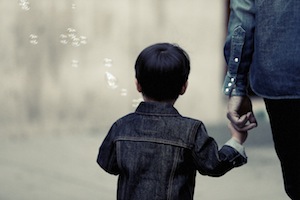I once worked with a client who sought therapy in the midst of an uncomfortable conflict; she came to me to help her way think and feel her way through her conundrum and find some resolution. During our first session together, this bright, confident woman openly shared her struggle with me. She explained that she was in a monogamous relationship with her high school sweetheart but recently found herself falling in love with someone who worked in her office building. Although she loved her partner dearly, she was intrigued by the “newness” of this other man.
When she arrived for the first session, this client appeared distraught and dejected, and she described the way she was feeling in more or less the same way. I asked her if she had talked about what she was experiencing with anyone else. She said she told two of her girlfriends, both of whom admonished her for being unfaithful and urged her to stop talking to the other man. She also spoke with her older sister, who suggested that she leave her partner, because “it isn’t natural to be with the same person for so long.”
At the end of the session, the client thanked me enthusiastically and told me she had found our time together to be profoundly helpful. I reminded her that I didn’t do much, and she acknowledged it. She said, “That’s mostly why it helped. You were the first person who just sat with me and let me sort through it out loud. I think all I really needed was to be able to come to my own conclusion, and you made it possible for me to do that.” What she said next was, for me, quite significant: “Sometimes it’s a person’s presence that makes all the difference.” I couldn’t agree with her more.
We live in divisive times, which complicates and challenges our capacity to communicate clearly and compassionately with each other. It’s all too easy to get so committed to one way of looking at things that any other view becomes impossible to acknowledge, let alone accept. This makes for interactions that are guarded, at best, and destructive, at worst. Whether discussing politics or conversing over cocktails about the stories of our lives, we all run the risk of letting our judgments interfere with our ability to connect with others—even if those so-called others are people we know and love.
When my client appreciated my being present with her, I felt both gratified and grateful. It served to remind me of why I first felt called to this work, and it affirmed my own belief in the power of presence. Many people have the experience of holding back from expressing themselves or vocalizing whatever they’re going through out of fear that they’ll be criticized or ostracized. Unfortunately, this fear often stems from past experience, as it isn’t uncommon for people to have difficulty responding with curiosity and care when what they’re hearing doesn’t jibe with their personal beliefs.
I think that most people—whatever their preferences or principles might be—can get behind the notion that the world would benefit from more peace and understanding. But regardless of how monumental it might seem to accomplish that, it starts in small and simple ways. It starts with you and me, right here and now. Even the smallest and subtlest interactions can make a world of difference; added together, they’ll make the world different.
I invite you to consider how you can begin to get intentional about the way you show up in the interpersonal encounters of your daily life. Here are some ideas to support your efforts to cultivate a more supportive presence.
- It’s not always what you say. Sometimes it’s how you say it, and other times, it’s what you don’t say that matters most. Be as aware of the ways in which you communicate—through your tone, timing, and body language, for example—as you are of the words you use. And remember that you don’t have to speak to be beneficial. By being willing to keep company with someone who needs it, you’re already making a remarkable difference.
- Get curious. As I’ve mentioned in this blog before, curiosity is the antidote to many of the damaging ways we might be inclined to treat one another. When someone is sharing anything with you, they’re demonstrating some degree of courage and vulnerability. When you can lean in with curiosity rather than pull back in fear or disgust, you allow the person to feel seen, heard, and understood. That goes a long way.
- Practice genuine listening. Listen to understand, rather than to respond. When it comes to being a good listener, most people have room for improvement. Sure, it can be difficult to set aside whatever you might want to say in order to really listen to what another person is saying to you. But focusing on forming a response to what you’re hearing makes it so that you’re not really receiving what’s being shared with you—and that comes across. Listening, like most things, is a skill that can be acquired and refined with practice. Challenge yourself to become fully immersed in the act of listening, trusting all the while that your chance to speak will come, and other people’s willingness to listen will improve as a function of your having been so fully present for them.
- You can’t go wrong with kindness. At the end of the day, what most people want is to be treated with respect and understanding. You don’t have to be the most articulate person in the world to be a source of tremendous support to other people. All you have to be is willing enough to keep people company and radiate warmth and kindness while you do it. If you’ve ever been going through something difficult, you know how much another person’s kindness can contribute to turning things around. Be that person for others.
- Concern yourself less with whether you agree or disagree and more with how the exchange transpires. In our current social context, voicing an opinion and seeking to be right often seems more important than connecting with other people and exchanging ideas. The truth is, we don’t always have to agree in order to keep good company with each other. In fact, there’s immeasurable value in viewing things differently; it creates opportunities for learning and growth. But that can only happen if both people mind their presence and show up to the exchange with a willingness to be curious, compassionate, collegial, and kind.
In our current times, it can be easy to get discouraged by the state of human affairs. It might be tempting to lose hope or become hardened to others, choosing separation over connection. But I urge you to have the fortitude to be a source of light in the world. Take small but significant actions toward being more present for others—as well as for yourself—and start to watch your interactions transform in surprising and inspiring new ways.










